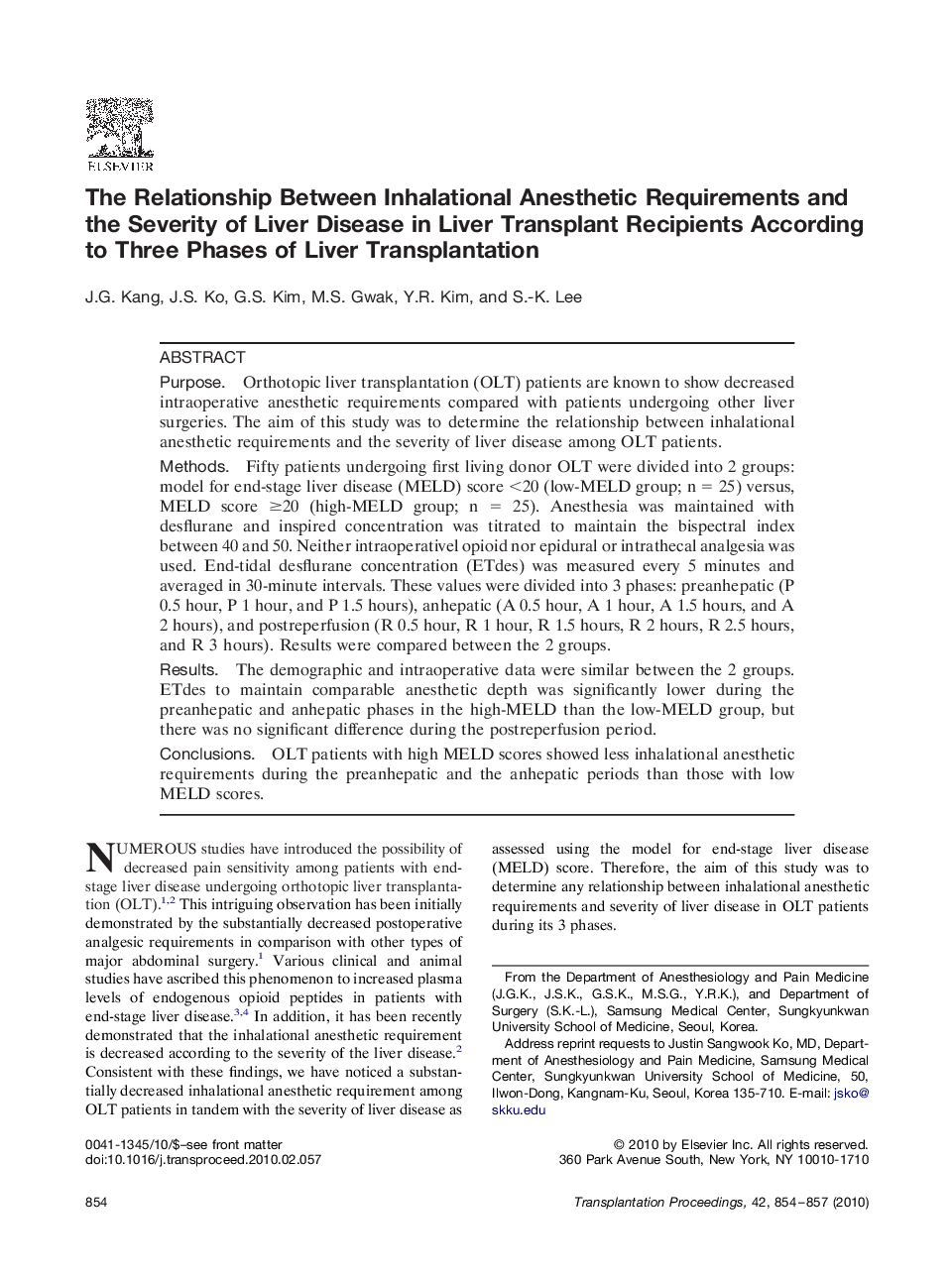| Article ID | Journal | Published Year | Pages | File Type |
|---|---|---|---|---|
| 4258148 | Transplantation Proceedings | 2010 | 4 Pages |
PurposeOrthotopic liver transplantation (OLT) patients are known to show decreased intraoperative anesthetic requirements compared with patients undergoing other liver surgeries. The aim of this study was to determine the relationship between inhalational anesthetic requirements and the severity of liver disease among OLT patients.MethodsFifty patients undergoing first living donor OLT were divided into 2 groups: model for end-stage liver disease (MELD) score <20 (low-MELD group; n = 25) versus, MELD score ≥20 (high-MELD group; n = 25). Anesthesia was maintained with desflurane and inspired concentration was titrated to maintain the bispectral index between 40 and 50. Neither intraoperativel opioid nor epidural or intrathecal analgesia was used. End-tidal desflurane concentration (ETdes) was measured every 5 minutes and averaged in 30-minute intervals. These values were divided into 3 phases: preanhepatic (P 0.5 hour, P 1 hour, and P 1.5 hours), anhepatic (A 0.5 hour, A 1 hour, A 1.5 hours, and A 2 hours), and postreperfusion (R 0.5 hour, R 1 hour, R 1.5 hours, R 2 hours, R 2.5 hours, and R 3 hours). Results were compared between the 2 groups.ResultsThe demographic and intraoperative data were similar between the 2 groups. ETdes to maintain comparable anesthetic depth was significantly lower during the preanhepatic and anhepatic phases in the high-MELD than the low-MELD group, but there was no significant difference during the postreperfusion period.ConclusionsOLT patients with high MELD scores showed less inhalational anesthetic requirements during the preanhepatic and the anhepatic periods than those with low MELD scores.
